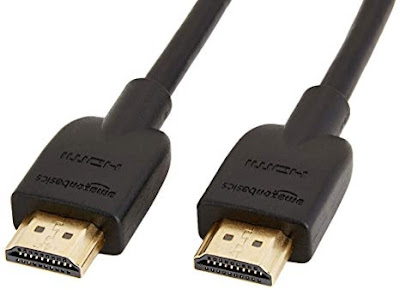How does a single wire control every pixel on an entire TV screen Or Monitor Screen? How can it convey enough information for that many pixels, sixty times per second?
The HDMI cable is a single cable, but not a single wire, and it’s the most common way of transferring a video signal to a modern touchscreen LCD Monitor.
There are actually 19 pins on an HDMI connector. The “TMDS” signals, Transition Minimized Differential Signaling, actually carry the video signal. There are three channels of differential TMDS and one differential clock. “Differential signalling” means that the signal is sent along impedance matched twisted pair wires as both a positive and an inverted version of the same signal — the two always add up to nothing. But at the receiver, the inverted signal is once again inverted and added to the positive signal. That makes nearly all noise that might have been picked up zero itself out, leaving just the signal. This allows very, very fast, low voltage communications.
Digital video can be pretty large. A 1080p30 video stream is, of course, 1920x1080x30 frames per second, each pixel being up to 24-bits of color. That adds up to 1.493Gb/s (gigabits per second). If you went for an UltraHD-4K signal at 30Hz, that 3840x2160x30x24 = 5.972 Gb/s. These are pretty heady numbers.
But HDMI was designed for this. The original HDMI 1.0 cable allows for 4.95 Gb/s data transmission, of which 3.96 Gb/s for video, the rest for audio. It supports 1080p60 at full 24-bit YCrCb or RGB color encoding, and it supports 30-bit YCrCb at 4:2:2 color subsampling.
HDMI 2.0 extended the overall bandwidth to 18Gb/s, enough to support 14.4 Gb/s video including uncompressed 24-bit 4Kp60. HDMI 2.1 was extended to a whopping 60 Gb/s, enough to support uncompressed 8Kp120 video, or 10Kp120 with some chroma subsampling! New modes in HDMI 2.0a/b and 2.1 also allow for multiple video streams, HDR modes, and up to 32 audio channels. You do need a special new cable to hit those speeds.
Your video source may be highly compressed internet video from a Roku or similar IPTV device, less compressed video from a Blu-ray or UltraHD Blu-ray, or totally uncompressed video from a PC GPU. It doesn’t matter — HDMI takes it all over as uncompressed video, full speed. It’s just that fast!
 |
| HDMI Monitors - Rugged and All-Weather 7" to 18" touchscreens www.xenarc.com |
And there is almost a way to do a few of these things over a single wire! Smartphones for years have supported video output via MicroUSB connector using a protocol called MHL (Mobile HIgh-definition Link). The MicroUSB cable only carries five wires, and MHL reassigns the USB data pair — two wires compromising one differential link — as the MHL data pair, and used the “ID” pin (normally for USB on-the-go) as a data communications signal. Power and GND are unchanged from USB.
 |
| HDMI Monitors - Rugged and All-Weather 7" to 18" touchscreens work anywhere. www.xenarc.com |
There are more advanced versions of MHL that run over USB Type-C connectors, using more wires and Type-C’s built-in mechanism to allow for “alternate mode” data transfers. The fastest version today supports about 30 Gb/s transfers, enough for 8K video.
Digital Data Formats
And if course, in most of these things, we are talking about digital systems. The cable itself, in the case of HDMI, is directly sending digital picture data to your display, but even there it's packaged into a format that's independent of the specific display/monitor/TV implementation. The source and sink on an HDMI cable exchange data, called a “handshake,” in which they agree upon a format both devices can support. The source then proceeds to send data in that format, picture, audio, and synchronization infotmation. The display itself contains a computer that works out how to precisely process that incoming raw data for display on-screen.
This can be involved. For example, if I hook my Sony Playstation 3 up to a Xenarc display, they will probably agree on some version of a 1920x1080 video format. However, being a digital television, the LG's display can only deliver a 3840x2160 image. So the data that comes in over HDMI is sent to an image processor that upscales the HD video. That is passes on to the LCD controller that figures out how to draw the pixels. And that process is different than drawing those pixels on a plasma, DLP, or OLED television or a Xenarc rugged all-weather touchscreen monitors. That is one of the big advantages of digital: the decoupling of the display technology from the video signal.
Once decoded, the uncompressed visual data is routed to that same video signal processor that took in the HDMI input, and on to your screen.





No comments:
Post a Comment